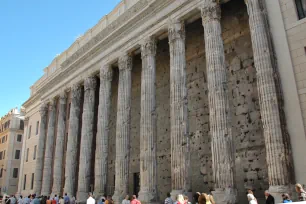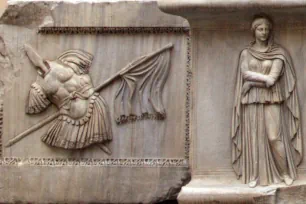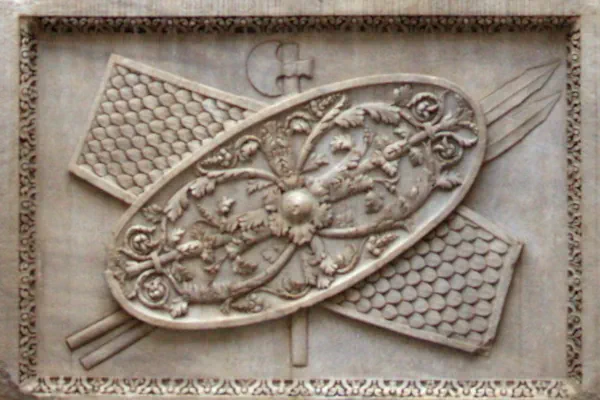Of the original Temple of Hadrian, only one row of eleven columns is still visible today as part of a seventeenth-century stock exchange building. The temple was built in honor of the Roman emperor Hadrian, who reigned from 117 to 138 AD.
The Temple



The Temple of Hadrian was built in 145 AD by Emperor Antoninus Pius, successor of the deified Hadrian, to whom the temple was dedicated. The temple was situated at the Campus Martius (Field of Mars).
A large staircase led to a four-meter-high podium. On the podium was a cella, surrounded by thirty-eight large Corinthian columns, each 15 meters tall. Along the length of the temple were thirteen columns, the front and back had eight columns each. A small flight of stairs led to the cella, a barrel vaulted chamber decorated with pilasters. At the foot of the pilasters were war trophies and reliefs, allegorical depictions of conquered provinces. Some of the reliefs can now be found at the inner court of the Capitoline Museums.
A part of the cella’s wall, which was made of a special kind of volcanic tuff, can still be seen behind the remaining columns.
Stock Exchange Building

A mere eleven columns have survived the times; all were part of the north side of the temple.
At the end of the seventeenth century, pope Innocent XII commissioned Italian architect Carlo Fontana with the construction of a new papal customs office at the site of the Temple of Hadrian. Fontana, who worked with his son Francesco on the project, integrated the remaining columns of the temple in the new building, which was completed in 1700 after ten years of construction.
Today the building houses the Borsa Valori di Roma, Rome’s stock exchange. It is located at Piazza di Pietra, a small square not far from the Via del Corso.
- Next: Tiber Island
- More Rome Ancient Sights
- More Sights & Attractions in Rome

